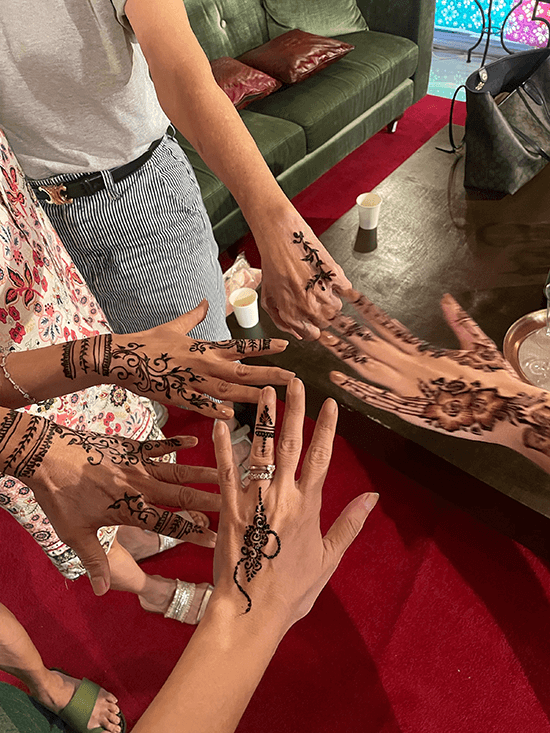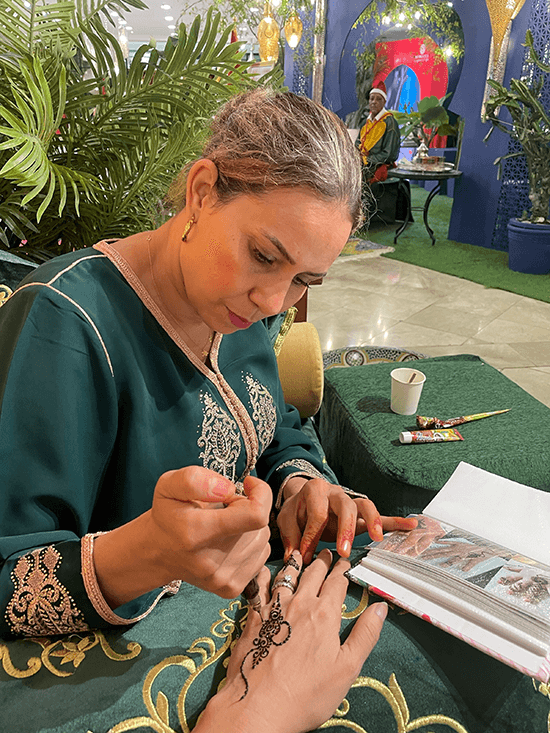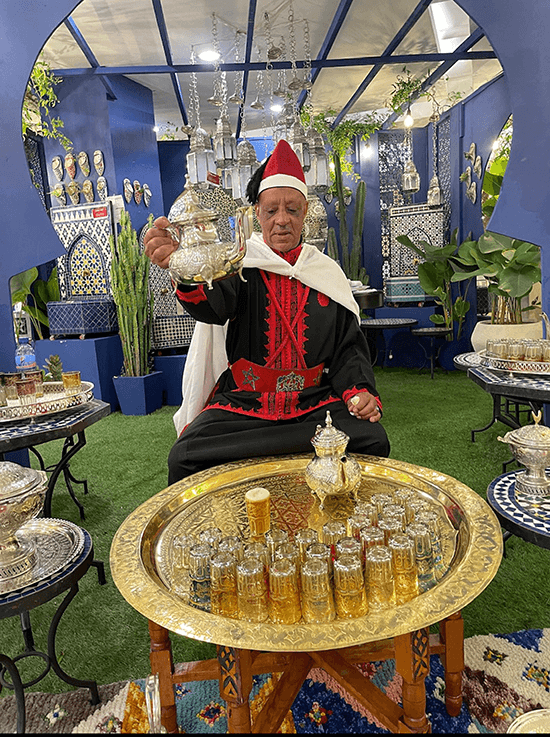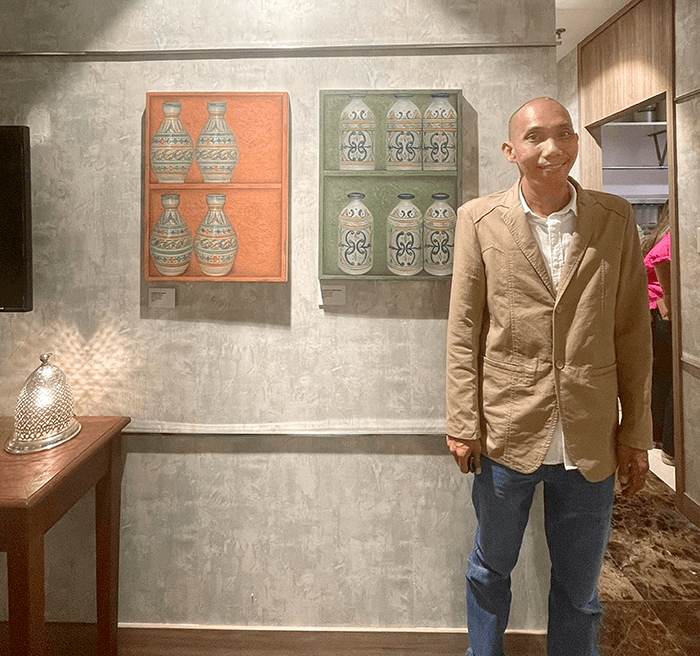Tasting Morocco at home
Even if revenge travel is upon us, spurred on by internet posts that make you want to pack and go, sometimes it’s not that easy to just pack up and go. Not that there is any lack of good deals for airfare and accommodations, plus so many helpful tips from friends and strangers.
Take me, for instance. I need to coordinate the schedules of two college-age kids, another who is an artist with any number of exhibits, plus my summer classes.
The time we are all available is August when temperatures abroad are terribly hot, or December, which is not a good time to visit the southern Philippines. Our first planned trip to Siargao was canceled when the island was almost wiped out by typhoon Odette.
We have been to Siargao and Hong Kong in August when the temperatures soared, and I don’t even want to think about Italy or Paris, where we spent our honeymoon at that time of the year.

The searing heat, shops closed for the holidays and un-air conditioned trains and department stores—let’s just say I don’t want to experience that again.
But sometimes it appears you can experience so much of the richness of a culture without actually heading there, without the long plane rides, visas, traveling at odd times of the year. Is that even possible?
If the experience we’re talking about is Morocco, as presented by Rustan’s Makati, well, not only was it possible, we were in for such a treat. How a cafe, and tea, and Moroccan music, and henna tattoos, and a tent, plus tagines and other dinnerware was able to transport us to that Northern African country was simply amazing.

It also helped that the team was composed mainly of Moroccans and even with the language barrier they were sweet and hospitable—like Pinoys. No wonder this annual cultural exchange is a success.
By the time you read this, the Casablanca restaurant that took over East Cafe on the second would have finished its run, but don’t worry. There are recipes at the end of this article given to me by the Moroccan chef himself, and I have an abbreviated cooking demo at Rustan’s Home in early November.
Gone, too, is the musician Mahassini Mohamed, strumming soulful music on the instrument known as an oud. I wish I had had the lovely blonde tattoo artist Loubna Bayoud put more tattoos on my hands and legs, as these softened into a golden-brown color and are supposed to bring on a proposal or two from the men! They are to me more attractive than jewelry.

How many cups of the Moroccan mint tea did we enjoy on the fifth floor, poured by Abdelrrahim Lbahja from a height for drama, to cool the tea and aerate it with little bubbles? They actually use a number of different mint leaves and teas, as explained to me by the Moroccan festival operations manager Abdelkarim Aitzi.
I was able to eat at Casablanca twice, and sample all three main dishes, salads and desserts. Moroccan food has a subtlety that grows on you; even their tagines don’t have the in-your-face boldness that other cuisines present.

So on my first day at the festival I already bought a reasonably priced terracotta tagine—the term applies to both the conical cooking vessel and the dishes made with it.
Since I have already been cooking tagines using my Dutch oven, I am eager to see the difference that using an actual tagine vessel will have. My demo at Rustan’s Home first week of November will explain how that vessel is used.
It’s all about the shape—the conical form allows food to steam (and cook quickly) in very little liquid.
When I inquired if the Moroccan spice harissa was available, as it had been in previous festivals, the Moroccan team instead gave me the following recipe, saying it could be easily made.
Harira soup
For a taste of Morocco at home, this soup recipe that chef Salim gave me is ideal because it is easy, doesn’t require a tagine, and is so flavorful even without any special ingredients.

Abdelkarim also sent me a video for this soup, so popular in Arab states and often used to break the fast at Ramadan. So below is Salim’s recipe, and then I am going to explain how I combined elements of his recipe and the video. This involved a bit of ingredient sleuthing to figure out the Macedonian herbs and the lattice, which I at first thought must be lettuce—so wrong. Neither was it the lattice crust you see in American pastry. Turns out it was vermicelli—sotanghon! The same sotanghon they used in the seafood B’astilla at Casablanca.
- 1kg tomato
- 200g celery
- 100g coriander and Macedonia (for the Macedonia we combined fresh parsley, mint, sage and a little dried rosemary)
- 150g canned tomato sauce
- 50g hummus (chickpeas)
- 50g lentils
- 1 teaspoon salt
- Turmeric
- Black pepper
- 1.5 L water
- 200g flour
- 160ML water
- 30g lattice (vermicelli noodles or sotanghon)
Here’s my version guided by the video:
Mix the flour well with the water and cook until it thickens and forms a slurry.
Sweat a chopped onion in butter then add the meat of your choice, which has been precut into small pieces.
Moroccans prefer lamb for this, which Filipinos are not so crazy about because of both the gamey flavor and exorbitant price. Since the video suggested that chicken could be used, that’s what I put in the pot next.
My chicken was already cooked, the carcass used to produce the broth for shabu-shabu, so I shredded about 1/4 kilo. Then I added 2 small cans of drained chickpeas and about a half cup of dried lentils.
I will be the first to tell you that dried chickpeas that you buy at Assad’s and soak overnight are superior in every way, and the harira video mentioned that as well. But when you don’t have time or stock of the dried, I thought the canned—our local Ram’s—worked quite well.
Next I added a large can of tomatoes, puréed in the blender, a half cup of chopped celery leaves and stems; salt, pepper and 1/2 tsp. cinnamon.
When the lentils are tender I added the sotanghon noodles, like 50 grams. Then all the fresh chopped herbs and a bit more water.
I did add one Knorr chicken cube, as I often do to round out the flavor.
The resulting dish was Moroccan comfort food, and comforting to any nationality, I’d be bound.
You squeeze a bit of lemon juice on your serving right before eating.
Harissa
- 500 grams red capsicum
- 250 chili, red
- 10 g garlic
- Olive oil
- Salt
- Cover with olive oil.

Apart from cooking, viewing the artworks of multi-awarded Nikulas Labajo will pique your interest in the everyday facets of Moroccan life: flowers, footwear, the fez.
“I like the bright colors, intricate shapes and geometric patterns of Moroccan design,” he says, and we were so fortunate to be around when his paintings were revealed on Sept. 30.
This will surely help satisfy my longing for all things Moroccan till we are able to actually visit the Kingdom of Light, and, failing that, till the next festival at Rustan’s.


